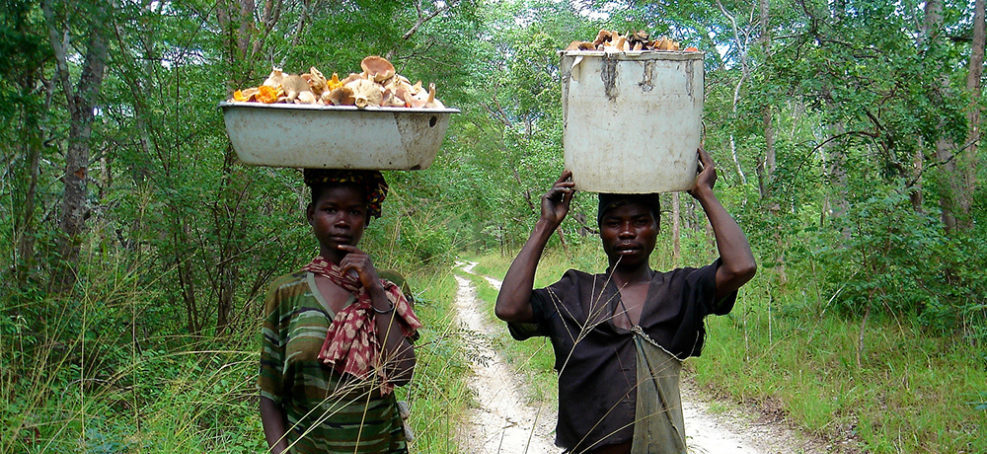Research suggests that the way people use and manage forests is largely shaped by gender norms and relations. But how exactly? Linley Chiwona-Karltun, researcher at the Swedish University of Agricultural Sciences, SLU, and Ngolia Kimanzu, advisor at Salvation Army, share insights from their ongoing research about the role of gender in the use of forest resources.
In low-income countries, forests can contribute to food security in multiple ways. People can eat wild forest fruits and nuts, diversifying diets with vitamins and micronutrients and cushioning the effects of food insecurity. Forest resources can also be used for making handicrafts and other unique to a particular place products that can be sold in niche markets, bringing additional income. In rural Zimbabwe, for example, fruit trees make up for 20% of woodland resources, which gives a substantial base to work with.
Interestingly enough, it appears that within households, the use of forest resources differs quite a lot depending on whether you’re a man or a woman.
“Our own experience in Eastern and Southern Africa shows that access to forests is often shaped by gender with men granted access to exploit forests for income generating activities such as logging, while women are given access to exploit non-timber forest products (NTFPs) such as fuelwood, fodder, fruits and mushrooms,” explains Ngolia Kimanzu.
Research from Nepal has shown that access to forest resources is unequal, and often, women do not have as much decision making power in forest management as men do.
Other studies highlight that women are sometimes the more skilful foragers. In the case of Laos, women were found to be way better at identifying different plant species that can be used either as medicine or food. In South-Eastern Africa, “women and children are the ones who usually go to pick fruits and mushrooms. This way they provide food in times of need”, says Linley Chiwona-Karltun.
So, judging by examples mentioned above, there are some cases in Africa and Asia that suggest women are better in forest management than men, but, of course, on a global scale the gender aspect of forest use can differ widely. And while there are many different cases in which gender influences one’s connection to forest resources, the overarching evidence is still unclear.
That’s what this new study is trying to overcome: The research will map out the relations between forests, food security and gender in a systematic way. By compiling and examining numerous studies the research aims to give a better understanding of the role of gender in accessing forests.
The researchers argue that the knowledge generated by this research project will guide development practitioners and policy-makers:
“Forests can play an important role in the attainment of the SDG 1 “ End poverty in all of its forms everywhere”. However, to fully realize the potential of forests in eradication of poverty, we need to give priority to gender inequality in research and development at the highest levels of decision making”, – point out Linley Chiwona-Karltun and Ngolia Kimanzu.
To find out about the study in more detail, download the latest open-access overview article from Environmental Evidence.
Would you like to find out more on the topic of forests and food? Check out our policy brief Forests+Farming=Food Security that reflects on the cases of integrated landscape management in the uplands of South and Southeast Asia.
